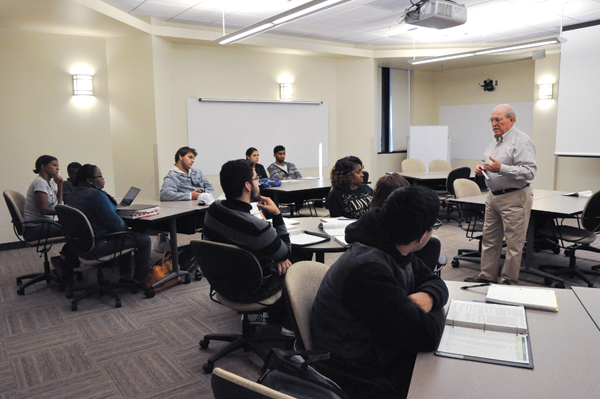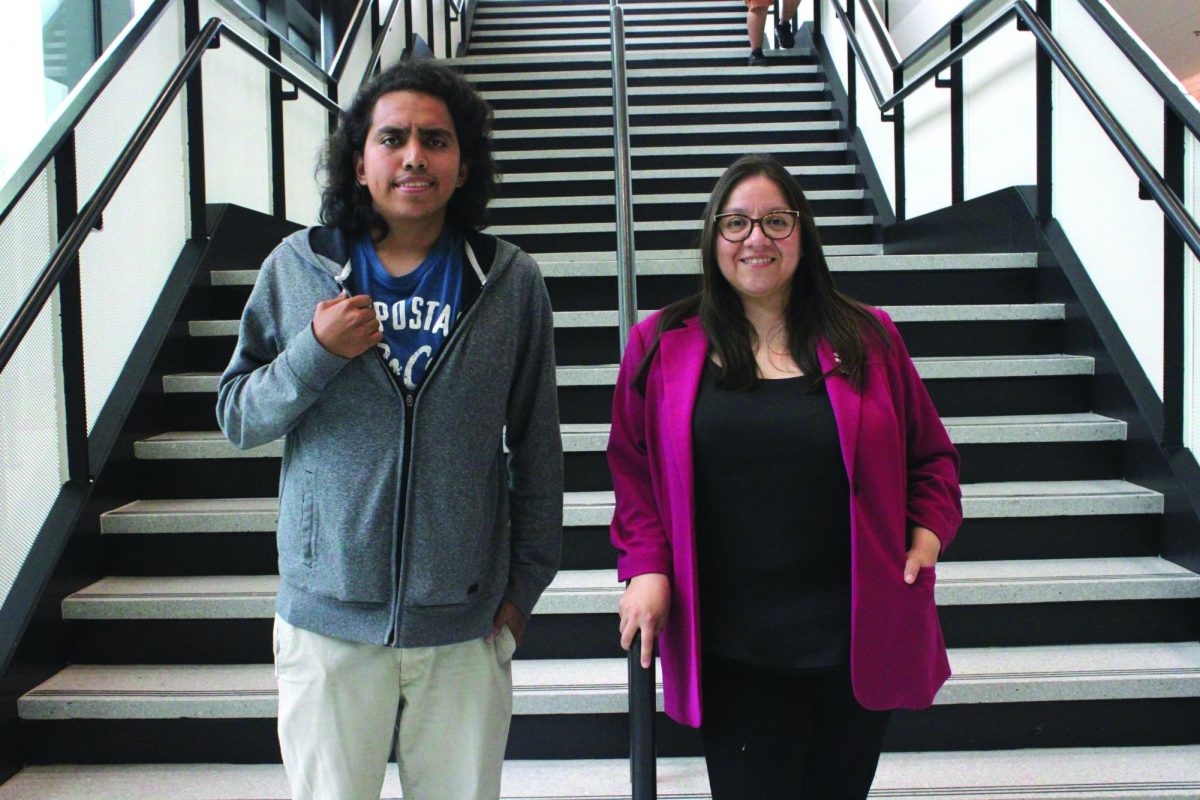By ANDREW WALTER
@AndyWalterETC
Eastfield recently submitted its five-year report to the Southern Association of Colleges and Schools and the results of the evaluation, available in December, will determine if the school remains an accredited

institution.
If the SACS Commission on Colleges determines that Eastfield does not meet adequate educational standards, and the college does not work to meet them within a set time frame, Eastfield would lose its credibility.
Kim Chandler, SACS liaison and dean of planning, research and institutional effectiveness, said a college not being accredited would have disastrous consequences.
A school that loses its credibility faces two issues: degrees given by the school become essentially worthless and the school won’t receive any federal aid money.
“Here’s why students should care: because it means their degree is worth something,” Chandler said. “If we failed this, no one’s going to take your degree.”
Chandler also said the reports that Eastfield submits are incredibly thorough.
More than 90 questions, such as if the school has degree-granting authority from the appropriate government agencies, must be answered describing how Eastfield meets these specific standards set by the SACS.
“Any one of those 94 responses, in order to answer that standard, could be anywhere from three to 10 pages long,” Chandler said. “These reports can get easily 500-plus pages long, 1,000 pages.”
Chandler said the reports must include documentation of how each standard is met. Because of its length, the reports are submitted electronically. Eastfield began collecting data for the recent report two years ago.
These reports are also shared with the Texas Higher Education Coordinating Board, the government agency that oversees all public post-secondary education in the state.
One way that Eastfield collects data for its reports is by having students in core classes complete the core artifact assignments.
Eastfield evaluates students’ answers on the assignment to determine if they are retaining the material learned in their classes and demonstrating critical thinking skills.
Eastfield made a separate report for SACS Substantive Change, an accreditation branch made for a college’s off-site locations, concerning Eastfield’s relationship with the almost 30 high schools offering dual credit programs.
Janice Hicks, dean of educational partnerships, said this report is made to ensure that dual credit programs also meet similar standards to Eastfield.
“Of the dual credit faculty at the high schools, the majority are high school teachers, but they meet the same credentialing standards as our faculty members,” Hicks said.
Hicks said the dual credit programs at these high schools need to have instructors with the same credentials as those at Eastfield, the same syllabi and textbooks with similar material to those found in an Eastfield class.
SACS sent the substantive change committee of four members to visit Eastfield and three randomly selected high schools within the dual credit program from Sept. 17 to Sept. 20.
The schools chosen were Bryan Adams High School, Mesquite High School and North Mesquite High School.
Mike Walker, executive vice president of academic affairs and student success, said the substantive change visit would be instrumental for the longevity of the dual credit program.
Hearing good feedback from the committee could make Eastfield more attractive to potential dual credit enrollees.
[READ MORE: District introduces progress reports to help students track grades]
“We need to make sure that everybody understands that a dual credit student is a student of Eastfield College,” said Walker. “They might be a student at Bryan Adams High School but they are fully an Eastfield student. It is up to us to integrate them completely into the Eastfield culture.”
The committee, made up of one representative from SACS and three representatives from other colleges in the southern U.S, spoke with some of each high school’s staff, faculty, administration and students to hear firsthand how SACS standards were being met.
After their visits, the committee would normally provide recommendations and feedback about how a college could improve their dual credit programs and coordination with the high schools.
Chandler said that before the committee left, they said Eastfield and the dual credit programs at the high schools had “passed with flying colors.”
Chandler, Hicks and Walker said the committee was particularly impressed by how well-maintained Eastfield’s and the high schools’ campuses and facilities were.
Hicks said that, as she understood, not getting any recommendations from the committee was shocking because SACS typically provides at least one recommendation.
“I think it’s a collaborative victory for the college and the high schools,” Hicks said. “Part of it is some improved processes and procedures that we’ve put in place. The other part is that the high schools support us in that and they comply with what we need to get done.”
This is a good sign for Eastfield because some recommendations could put the college on warning status from SACS. While Eastfield has never lost its accredited status, it was temporarily put on warning status from SACS nearly 10 years ago for not having enough full-time faculty.
[READ MORE: Tealer approved by board as next Eastfield president]
Walker said some professors’ credentials weren’t at the satisfactory level. Many professors had to show transcripts as proof of their credentials.
In 2008, Eastfield reported employing 110 full-time faculty and 296 adjunct, or part-time, faculty, meaning 73.9 percent of professors were part-time. Eastfield hired more full-time faculty in 2010 and 2011 to combat this.
Eastfield currently has 140 full-time faculty and 477 adjunct faculty, meaning about 77 percent of instructors are part-time.
Walker wasn’t worried that Eastfield could potentially go back into warning status for that ratio. He said that, while the new eight-week schedule has created problems for the traditional hiring and teaching methods, especially with having more adjunct faculty, he said that the quality of the education provided was what matters most.
“There’s sort of a negative thought about SACS because 10 years ago we got in trouble with them, ‘Oh my gosh, they’re coming after us,’ ” Walker said. “That’s not the way we’re viewing it now. We want to do what is best for students. That is what we’re here for.”
Sharon Cook, assistant to the president, has worked at Eastfield for 36 years. She said that there are no breaks between each report.
“It’s almost like once you get one complete you’re working on the next one,” Cook said. “SACS is a cycle.”







